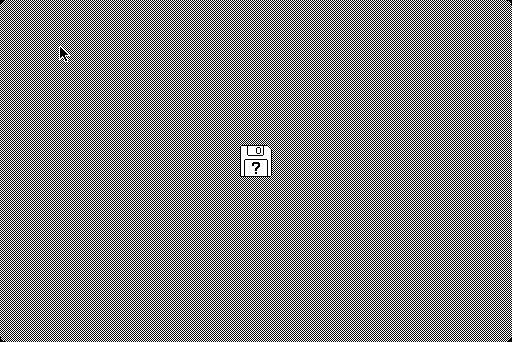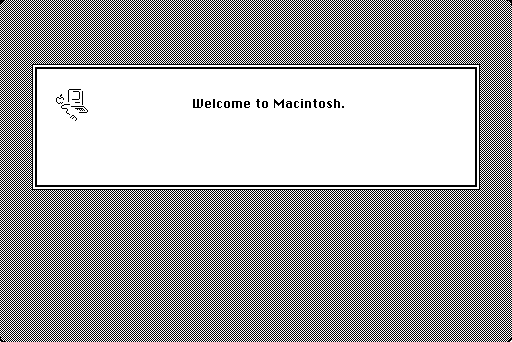SE/30 Forever
< Back to homeSE/30 Startup Sequence
Power up
The Macintosh SE/30 has a hard-wired power switch, identical to the one used in the Macintosh SE, located on the rear of the computer on the power supply unit (PSU). This is as opposed to the 'soft power' available in the Macintosh II, whereby power up can be initiated via a power switch on the ADB keyboard.
System startup
When power is first applied to a Macintosh SE/30, the following sequence of events takes place[1]:
- One of the Sony sound ICs monitors the voltage levels on the board and asserts the /RESET signal until 0.25 second after the voltage has stabilized.
- The/RESET signal causes the CPU,the general logic ICs,and all of the internal devices to come to a known initial state. The / RESET signal is also available to each expansion card slot so that expansion cards can be reset to a known initial state.
- The Sony sound IC deasserts the / RESET signal and the CPU looks at the first four words in memory (starting at location $0000 0000) to get the Reset vector. When VIAl is reset, it pulls the Overlay signal high, which causes the memory-control Ie (GLUE or MDU) to use the ROM overlay address map. In the ROM overlay address map, an address to a location in either the range $0000 0000 through $OFFF FFF or $4000 0000 through $4FFF FFFF is decoded as an address ,to ROM.
- The CPU goes to the memory address pointed to by the Reset vector and begins to execute the code it finds there (the Reset handler).
- One of the first instructions in the Reset handler causes the Overlay signal to go low, which switches the memory-control IC (GLUE or MDU) to the normal address map. In this address map, RAM is located at $0000 0000 through $3FFF FFFF and ROM is located at $4000 0000 through $4FFF FFFF.
- The Reset handler carries out the startup procedure.
- Next, a memory test and several other system tests take place. After the system is fully tested and initialized, the software clears the VIA's overlay bit, mapping the system RAM back where it belongs, starting at address 0. Then the disk startup process begins.[2]
- First the internal disk is checked: If there's a disk inserted, the system attempts to read it. If no disk is in the internal drive and there's an external drive with an inserted disk, the system will try to read that one. Otherwise, the question-mark disk icon is displayed until a disk is inserted. If the disk startup fails for some reason, the "sad Macintosh" icon is displayed and the Macintosh goes into an endless loop until it's turned off again.
- Once a readable disk has been inserted, the first two sectors (containing the system startup blocks) are read in and the normal disk load begins.
What the startup sequence looks like

Above: The Macintosh is looking for a system volume with valid system software to start from.

Above: The Macintosh found a bootable disk and proceeded to boot from it, all checks passed.

Above: The System displays this welcome dialog so the user knows startup is progressing.
Sad Macintosh
The Sad Macintosh icon appears with an error code if the Macintosh found a problem when running its checks.
See the Troubleshooting page for more information about why a Sad Mac occurs on the SE/30 and how to fix it.

Above: The Sad Macintosh with error code.
Power down
The SE/30 has a hardware power switch. When it's time to power off, choose Shut Down from the Special menu and flip the switch at the back.
References
- 1. Guide to the Macintosh Family Hardware, Second Edition, Apple Computer, 1990. Pages 243-244,247-248,259-260
- 2. Inside Macintosh, Volume III - Page 42